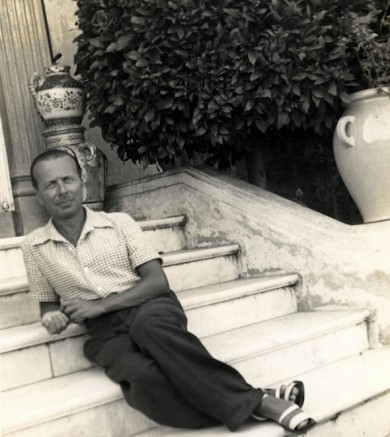MTT, New World serve up bracing modernist program al’Italia
Luciano Berio’s masterpiece Sinfonia was the bait for Saturday evening’s New World Symphony program led by Michael Tilson Thomas. Although Sinfonia sold out the hall, it was uncompromising music by another Italian composer, Giacinto Scelsi, that graced the first half of this Sounds of the Times concert.
Scelsi (Count D’Alaya Valva),was an eccentric who suffered a mental breakdown and hospitalization from 1949-1952. The composer found solace in meditatively playing a single note repeatedly on the piano. After travels in Asia and India and a conversion to Zen Buddhism, Scelsi used a team of musicians to compose, improvise, and explore new colors from single notes. Although Scelsi was mostly ignored in his native Italy and stopped composing in 1976, by the late 1970s his works were championed in France, and by the late 1980s widely known in the U.S.
Scelsi’s Ohoi, “The Creative Principles” exemplifies his mature voice. A nearly imperceptible single note swelled into the half-circle of four string quartets, animated by tiny trills, harmonics, and slight pitch bends. Microscopically exploring each shade from the inside out, the performers exposed a rich landscape. New World conducting fellow Joshua Gersen skillfully guided individual attacks and effects during the protracted rise in registers, resolving poetically into a final pure unison.
Bookending Ohoi from the choral balcony were Pwyll for flute and Rucke di Gluck for piccolo and oboe. Although more melodically inclined, both presage Scelsi’s later fascination with expanding single notes into complex sounds. Flutist Melanie Lançon’s discriminating pauses and sensitive unfolding of fundamental notes into organic gestures captured Pwyll’s improvisatory nature, while the frenetic Rucke di Gluck’s rapid-fire bird chatter enthralled. The sympathetic colors of Emma Gerstein’s piccolo and Kevin Pearl’s oboe diverged just enough to differentiate each’s virtuosic interpretations.
Aya Yamamoto, Nina Zhou, Chris Riggs, and Matthew Decker closed the first half with a riveting performance of Berio’s Linea for two pianos, marimba and vibraphone. From center stage, the ensemble’s controlled, gentle unisons flowed constantly outward into counterpoint and back inward, in a brilliant rendition.
Written in 1968, Sinfonia’s interweaving of material throughout its five movements creates a multilayered, dreamlike experience. Guest artists Synergy Vocals provided a reliable underpinning, having performed the work eight times in the last three years alone.
Emerging from a gong’s decay, Synergy’s unearthly intonations announced the opening movement. Massive orchestral interruptions provided drama while Synergy’s intoning morphed into the experimental vocalizations pioneered by Berio’s wife, soprano Cathy Berberian.
The second movement dilates the words “O, Martin Luther King” into vocables, resolving into the full name by the end. The expressiveness of “O King” depends upon precise synchronization of entrances between the ensembles, but Tilson Thomas allowed an occasionally smeary quality, connecting the usually self-contained movement to Sinfonia’s broader cycle.
“In ruhig fliessender Bewegung” famously uses a Mahler Scherzo as backdrop for an overwhelming flood of stream-of-consciousness musical and literary quotations, channeling the hallucinatory zeitgeist of the late sixties. Tilson Thomas brought unexpected clarity to every musical fragment, highlighting the instrumentalists over the mostly submerged vocalists, who only sporadically surfaced above the pleasant din when shouting Samuel Beckett’s iconic quotes “Stop! Keep going!”
The final movements quote the previous three, bringing Sinfonia full circle. The fourth employs introspective, shimmering attacks from “O King,” while the fifth opens dramatically with the virtuosic piano lines, gong, and brass hits from the first movement. Vocalizations and recitations from “In ruhig fliessender Bewegung” return to meld all that has come before in a collage of a collage.
As an encore, Tilson Thomas unexpectedly offered an additional performance of the first movement, further cementing the musical relationships for the audience.
Posted in Performances
Leave a Comment
Sun Feb 16, 2014
at 2:18 pm
No Comments
